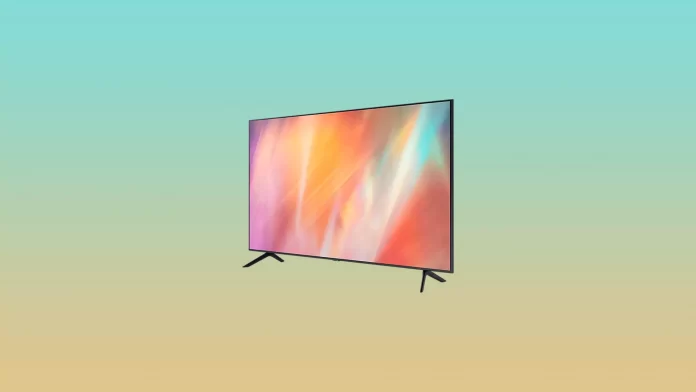To get the best picture on the TV screen, the distance to the TV must be the right size. This isn’t always easy to achieve – if you sit too far away from the TV, you will see a relatively small picture where small details will be lost.
Conversely, if you sit too close to the TV, rows of pixels will become visible and interfere with the picture and it won’t be a uniform image. So, ideally, you should sit at a distance from the TV where you can no longer distinguish individual pixels. Let’s figure out how to find the right distance to the TV.
How far from the TV screen should you sit?
The most important factor in determining the right distance to the screen is the size of a single pixel (and with it the diagonal of the TV device) and the sensitivity of your eyes: the bigger the pixels and the better your vision, the further away from the screen you should sit.
Last but not least, you should consider that the figured-out “TV to couch” distance is true for Full-HD devices. When watching TV with standard SD resolution you need to move further away from the screen because of the lack of sharpness of the content. And when watching a 4K TV, on the contrary, you can move closer to the screen.
Often the distance from the TV to the viewer is measured in three diagonals. In the table below you will find the recommended distances to devices of the most common sizes.
| Diagonal size, inches | Distance to SD TV, m | Distance to Full HD TV, m | Distance to 4K TV, m |
|---|---|---|---|
| 40 | 2,64 | 1,59 | 0,79 |
| 42 | 2,77 | 1,66 | 0,83 |
| 46 | 3,04 | 1,82 | 0,91 |
| 47 | 3,10 | 1,86 | 0,93 |
| 50 | 3,30 | 1,98 | 0,99 |
| 55 | 3,63 | 2,18 | 1,09 |
| 60 | 3,96 | 2,38 | 1,19 |
| 65 | 4,29 | 2,58 | 1,29 |
The calculated distances can be a good guide to considering the layout of the room before you buy the TV. You can measure the planned distance to the screen with a rope, for example.
Of course, you should keep in mind the fact that in stores the TV is presented under completely different lighting conditions than in your home, so the visual impression of the image on the screen may be slightly different.
What happens if you get the TV screen diagonal wrong?
Nothing catastrophic, of course. But over time you will begin to pay attention to some of the nuances.
Eyes get tired. Remember the typical advice from parents: “Don’t sit close to the TV”. Indeed, when a bright and contrasting image is too close, your eyes tire quickly. If you sit too far away from the TV, you have to strain your eyes all the more.
The picture quality will be worse. This applies when the distance between the TV and the chair/sofa is too small. If the screen resolution is low (say, HD Ready), the picture won’t be clear enough.
Viewing comfort is lower than usual. Again, this happens when the TV is too close. It’s just like in a movie theater: if you sit in the first row, you have to periodically turn your head, because you can’t catch the entire screen in your field of vision. It’s about the same as a large diagonal TV.
What TV diagonal should you choose for the kitchen?
Let’s face it: rarely do people in the kitchen concentrate on watching TV. Most often the “TV” is just bought in order not to miss something important, or just to watch (or rather listen to) programs in the background, while working with your hands or jaws. For this reason, those principles that you take into account when choosing a TV for the room, you can neglect.
The larger the diagonal of the TV, the fewer options for its placement. For example, a compact 32-inch can be hung on a bracket above the refrigerator. And the cost of such a device will be noticeably less than, say, a 40-inch one.
Another argument in favor of models with a small diagonal is weight. In the kitchen, you are unlikely to put the TV on a side table or in a niche in the furniture set. Most likely, you’ll hang it on the wall. So in the kitchen better choose the same 32-inch TVs.
What else is important to know when choosing where to place the TV?
The most comfortable mode for viewing is when your eyes are at or slightly above the center of the screen. If we take into account the traditional sofa, on which viewers usually sit, it is about 0.9-1.1 m.
Accordingly, the TV should be positioned so that its center is at this height. Usually, furniture sets are made with this in mind. The exception is the same kitchen, where the TV can be suspended over the refrigerator or table.
If the TV is too high, your eyes will dry out because your eyelids are also raised too high. You will automatically start blinking more, but even so, you will get tired much faster while watching a movie. In addition, if you have to tilt your head back, you will put more strain on your spine.
You should also not place the TV too low. You can easily hit it with a vacuum cleaner while cleaning or with a chair while setting the table for guests. This has nothing to do with the comfort of viewing, but, agree, that it’s a shame to damage your expensive device.






